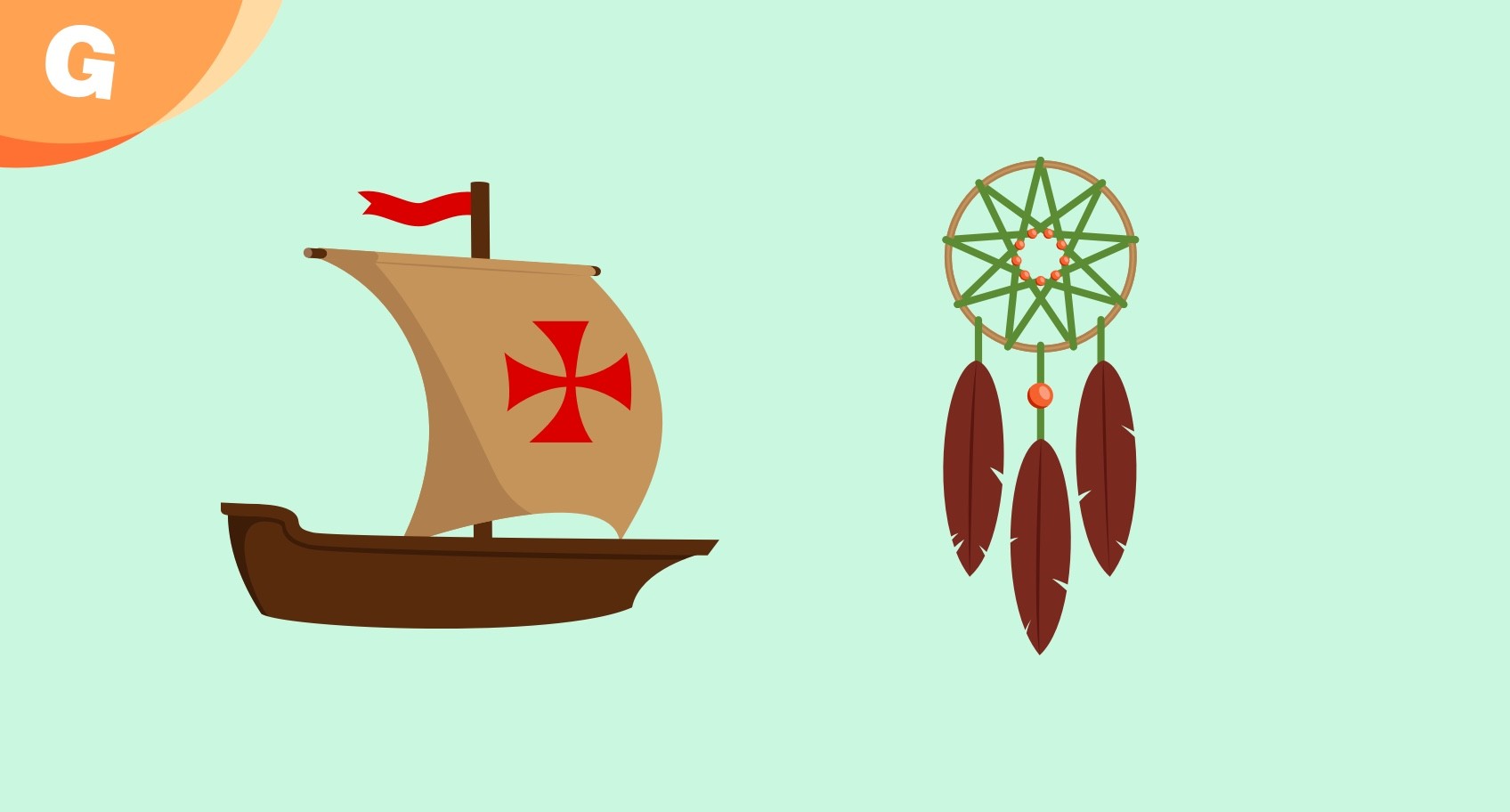
Lesson Plans for Columbus Day & Indigenous Peoples’ Day
The second Monday in October, known as Columbus Day, has been an official American holiday since 1971. Since then, Columbus Day has met with some opposition throughout the country, with some states choosing to recognize the day as Indigenous Peoples’ Day instead. Our lessons on this holiday are meant to give students a chance to consider both perspectives and think about the issues this day raises for themselves.
Try Gynzy
Recognizing Different Perspectives
For European settlers such as Christopher Columbus, finding and exploring new lands was a matter of great fame and wealth, not just for the explorers personally but for the country that sponsored the expedition.
For Native Americans who already lived in the lands being explored by Europeans, however, the results were disastrous. Through outright conflict, forced dispossession of lands, and the spread of diseases that local populations had no resistance to, the Native American population suffered greatly as a result of European colonization.
How are we supposed to celebrate this holiday while also acknowledging the ways Native Americans have been discriminated against and silenced from our national history? Instead of trying to answer this question, we can try to present information on both perspectives so students can think critically about this question for themselves.
Getting Educated on Native American History
Though traditional wisdom has it that Columbus “discovered” North America when landing there in 1492, there were many different Native American peoples who called those lands home. Four notable tribes covered in our Indigenous Peoples’ Day lesson are the Cherokee, the Mohawk tribe, the Sioux, and the Navajo tribe, although there are obviously many more worthy of our study.
The history of how Native Americans were treated by European settlers and later the American government is not often discussed. Few Americans know, for example, that President Andrew Jackson signed the Indian Removal Act in 1830, which officially gave the government power to take lands from the Natives and force them to move west of the Mississippi. Eight years later, this culminated in the Trail of Tears, a forced march that resulted in more than 4,000 deaths.
But it is important that we take Indigenous Peoples’ Day as an opportunity not just to lament what was destroyed, but to celebrate the accomplishments of Native Americans in spite of the hardships they’ve faced. The lesson provides two ways to do this: first with an interactive map that shows which tribes inhabited which parts of America before European settlers came, then this Google Earth presentation that lets you hear indigenous languages.
Gynzy also offers a series of lessons on these Native American peoples:
The history of the Americas prior to European exploration is rich and filled with fascinating and advanced civilizations. Indigenous Peoples’ Day is an opportunity not only to learn this history but to celebrate the accomplishments of Native Americans in our recent history and present day.
Putting Christopher Columbus into Context
Christopher Columbus’ story is well-known. An Italian who was sponsored by Spain to try and find a route to Asia, he instead landed in what is now known as the Bahamas on October 12, 1492. The consequences of Columbus’ expedition and European colonialism are undeniable, but it’s interesting to try and consider what Columbus believed he was accomplishing at the time. This age of exploration, as discussed in the lesson, was primarily motivated by glory, gold, and religious belief.
Some of these trips resulted in legitimate scientific gain, such as Ferdinand Magellan’s expedition from Spain in 1519. Magellan would be killed in what is now known as the Philippines, but a ship from his expedition made it back to Spain in 1521, becoming the first vessel to circumnavigate the globe and prove the world was much bigger than previously believed.
A printable worksheet included in the lesson asks students to draw similarities and differences between Christopher Columbus, Ponce de Leon, John Cabot, and Ferdinand Magellan. The closing activity of our Columbus lesson asks students to consider the pros and cons of leaving your home to explore an unknown area.
Ask Students to Think Critically
The holiday that America celebrates on the second Monday of October, whether you want to call it Columbus Day or Indigenous Peoples’ Day, has been a controversial topic. However, that doesn’t mean we can’t present both sides of the issue to our students to allow them to think critically about the questions this holiday raises.
All of our lesson plans are standards-aligned and designed to engage students and get them thinking critically about the world. This holiday is another opportunity to do just that.
